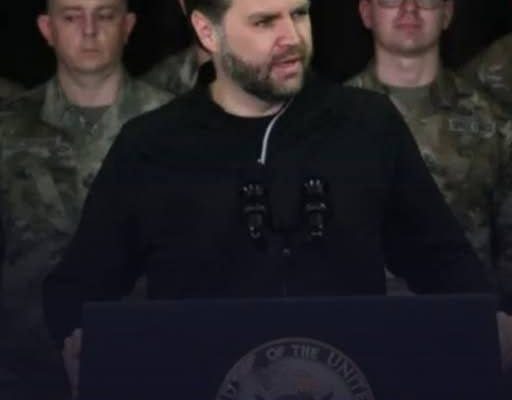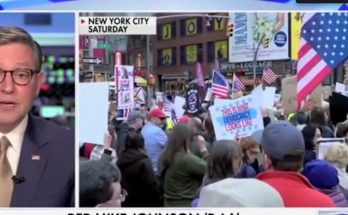Rajiv Shah, a former administrator of the United States Agency for International Development (USAID) under former President Obama, admits in The New York Times that cutting foreign aid created greater international economic opportunities.
Shah acknowledged in the NYT on Monday that traditional foreign aid, like what he oversaw during his tenure, fostered dependency and inefficiency, and that President Donald Trump’s decision to slash the foreign aid slush fund inadvertently paved the way for a more sustainable, locally driven financial future.Conservatives have long argued that endless handouts from the U.S. government, funded by American taxpayers, create perverse incentives, propping up corrupt governments and stifling economic independence in these countries. In 2025, under Trump, the USAID was dissolved following a series of executive actions, funding freezes, and rescissions that culminated in the cancellation of the majority of its programs. The agency initially had over 6,000 active programs, totaling around $120 billion in taxpayer funding.Trump’s cuts through the Department of Government Efficiency (DOGE) reduced the number of active USAID programs by 83 percent.The left immediately came out with “stats” claiming that if Trump’s foreign aid cuts continue through 2030, 14 million people who might have lived due to U.S. assistance could die. Shah echoed that narrative in his NYT piece, but ultimately decided that Trump’s gutting of the agency would allow these countries to find ways to support themselves.
Shah also insisted that private investments replace U.S. funding. However, what Shah doesn’t seem to realize is that Trump already has a plan for addressing the gap in USAID funding. (Sign up for Mary Rooke’s weekly newsletter here!)
Most Americans, especially conservatives, are against taxpayers’ funding of corrupt countries that are actively working against U.S. interests. Still, when a funding package from the U.S. government leaves a struggling nation, it creates a vacuum that needs to be filled.
In February, before USAID was effectively dissolved, Trump picked Ben Black, the son of billionaire Leon Black, to lead the U.S. International Development Finance Corporation (DFC). If you have never heard of DFC, you aren’t alone. It’s a little-known agency formed during Trump’s first term, tasked with making investments in foreign countries.
DFC is headquartered in Washington, D.C., and operates as an independent agency overseen by a nine-member Board of Directors. Due to the dissolution of USAID, the vice chair role (traditionally held by the USAID Administrator) is being filled in an acting capacity by Secretary of State Marco Rubio, meaning Rubio holds two of the nine available seats. The other seats are filled by Black (CEO), Treasury Sec. Scott Bessent, Commerce Sec. Howard Lutnick, and four private sector members, Irving Bailey (senior advisor, Chrysalis Ventures), Christopher Vincze (chairman and CEO, TRC Companies, Inc.), and Deven Parekh (managing director, Insight Partners). The fourth private sector member position is vacant as of early October.
It aims to counter adversarial influences, such as China’s Belt and Road Initiative (BRI), by supporting private-sector-led initiatives in strategic sectors. Critics have warned that DFC funding isn’t without risk of fraud, accusing former President Joe Biden of misusing agency funds to advance progressive ideologies abroad, rather than focusing on traditional development goals.
Trump reportedly nominated Black as DFC’s CEO after a Substack post suggested the foreign development agency could invest in ports and mines in countries like Greenland, which Trump has publicly touted as a potential acquisition target. Black argued that using DFC rather than USAID allows for American infrastructure, mining, and shipping companies to be involved in a partnership that increases American natural resources, according to Forbes.
Trump likely views the DFC as essential for outcompeting BRI, which China uses to expand influence in developing regions, often at the expense of U.S. national security. Unlike USAID’s scattershot approach, which sends taxpayer money to developing nations with little oversight and no set end date, the DFC targets strategic sectors like energy, infrastructure, critical minerals, and telecommunications to bolster U.S. standing internationally, thereby preventing Chinese monopolies and vulnerabilities. (ROOKE: New York Times Attempts To Explain Rise In Christianity Among Gen Z. The Piece Is As Terrible As You’d Think)
DFC investments, for example, have included upgrading the Subic Bay Shipyard in the Philippines to maintain a free South China Sea, funding a submarine fiber-optic cable from Singapore to the U.S. to thwart Chinese spying, and supporting infrastructure in India to bolster a key ally against Beijing.
With these investment priorities in mind, the DFC is not just another aid handout. Instead, it becomes a masterful tool for the Trump administration to promote strategic competition and “America First” foreign policy that prioritizes U.S. sovereignty and prosperity over globalist entanglements.
Let Shah and the left send private investments to developing countries to their heart’s content. Meanwhile, Trump seems to be repurposing the establishment’s favorite slush fund into an international funding juggernaut that will secure our position as the world’s superpower. The bigger trick will be ensuring the taxpayer-funded agency stays on mission.



